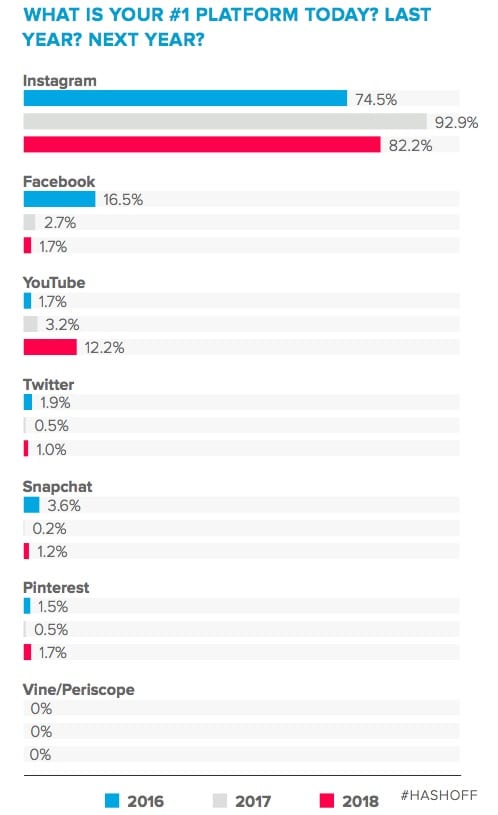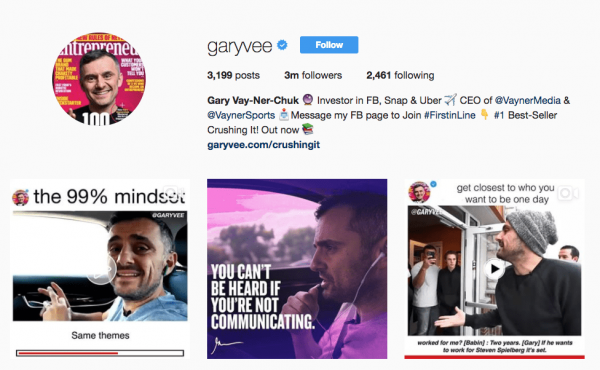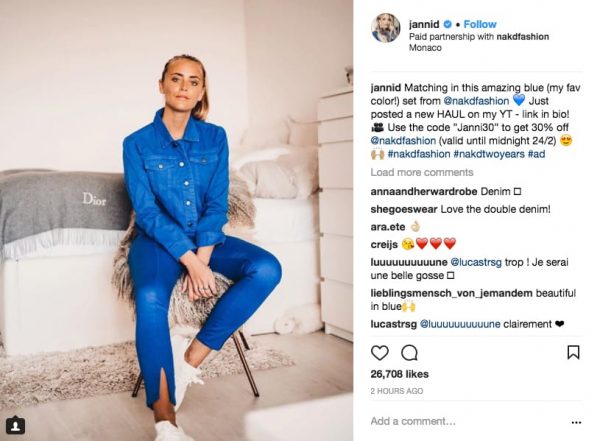Over the past few years, influencer marketing has become an integral part of any (and all) social media campaigns. Brand advocates and niche promoters, influencers are individuals with successful social media accounts — often with thousands or even millions of followers — who have an impressive engagement rate.
With an extensive reach and a community of committed followers, these social media experts are able to spread the word of your brand in an indirect way; resulting in a promotion that looks casual and organic, rather than pushy. And while retail has been the leading influencer industry, an ever-expansive influencer market has opened up new options for B2C, and even B2B marketing.
Without further ado, here are a few things to consider when working with influencers:
1. Choose the right channels
While Instagram is undeniably the most popular — and most recognized — platform for influencer marketing, the right platform for your campaign will always depend on your industry, type of product or service, etc. Assess where the majority of your traffic is going whether that be Youtube, Facebook, Twitter, or Instagram, and place your influencers in that realm. LinkedIn is especially important for influencer marketing focused on B2B.

2. Target the right influencers
There’s a huge pool of influencers at your disposal, and that number will keep growing. One excellent resource is LinkedIn, which is built specifically to search for those around you, or across specific networks. Enter specific keywords or phrases that pertain to your industry. There are also a variety of tools at your disposal: Tracckr, Klout, and BuzzSumo (which is free) being the most popular and arguably easiest to use.

And when reaching out to an influencer discuss their content, and how you think that you can benefit their brand, rather than the other way around.
3. Follower count is not the biggest factor
While “millions of followers’ is a great buzz-phrase, it’s just one piece of a larger pie. The influencer that’s right for you will depend on your brand, and what you’re selling. Sit down and assess what kind of influencer is right for you, before you get blinded by popularity.
Here’s how a relatively unknown brand was elevated — and compared — to the biggest names in the industry with the help of a seasoned influencer.
4. Create content, not ads
Given that influencer involvement is becoming more transparent, guide your influencer towards creating content that helps the customer and drives action. Don’t just make your product or service look pretty, show how it can be useful! Fostering a sense of open communication with the influencer will always pay off well.
5. Cultivate a relationship with your influencers
As with any partnership, build a solid rapport with your influencer in order for them to create the best possible content. When you reach out to an influencer, establish what their needs and goals may be first, and pitch how your ideals can align with theirs. You’re building a partnership that will help both of your brands.
6. Give an influencer creative control
Any given influencer is where they are today because they’ve tapped into their followers’ wants and needs. Use your influencer’s creative expertise and audience know-how by allowing your chosen influencer to run with a given idea. Treat an influencer like a content creator, not just someone who you pay to share your content.

7. Create discount promos, contests, and giveaways
One of the simplest ways to get your influencer’s audience to engage with your brand is to sponsor content by holding a contest or giveaway, are having a discount code available for a short period of time. Consult with your influencer to see what the best angle would be for your given industry.

8. Influencer agencies
A rise in the number of influencers spells out a rise in influencer agencies. Agencies like IMA, ViralNation, and August United are just a couple of the many agencies at your disposal. Keep this in mind when working with influencers, and make sure that your influencer is not working with a direct competitor.
9. Boost your initiatives
While the influencer market used to have a seedy, somewhat ‘guerrilla’ marketing tone in order to reel in consumers, the general population has slowly become used to paid ads being a part of their daily feeds. Influencers are taken advantage of this newfound transparency by delivering superior content and pushing that sponsorship to the top of the pages. Consider boosting your content to give you that extra edge while simultaneously promoting this influencer relationship.
10. Follow FTC guidelines
In 2018, “transparency” is the word on the tip of everyone’s tongue. In the past, influencers could secretly be a part of a marketing campaign and not disclose how much they were being paid. Last year, the Federal Trade Commission (FTC) changed the rules of the game by cracking down on certain gray areas involved with brand partnership. Instagram also has a “partnership” option that allows influencers to tag and disclose their affiliation with a company, which helps to ease the process. Again, while these guidelines don’t necessarily apply to all industries, it’s definitely something to keep in mind with working with influencers based in the U.S. For those offering serves within the EU, here are some further updates on the GDPR compliance.
11. Track, analyze, and measure your partnership ROI
While it’s all well and good to say “I have an influencer to this,” you need to monitor their performance, and how they’re bringing in leads. Use social media monitoring tools, analytics, and personal check-ins with your influencers to monitor how the campaign is unfolding. Keep in mind: letting an influencer get creative with a task will also help to solidify a relationship, so make sure not to overstep your bounds when assessing performance. Here is one example of an influencer NDA that you can use.
Do your research before choosing an influencer to represent your brand. Given that there are many individuals to choose from, focus on the ones who will not only help to promote your brand, but who have a creative edge that will give you a leg up on direct competition.
Trust in your influencer, give them a good amount of creative control, and stay in constant communication in order to get the best ROI.
Don’t forget to share this article


